
Immediately following the critical and financial success of Meet Me In St. Louis (1944) Arthur Freed entered a brief latency period, exacerbated by too many projects launched too quickly to receive his complete and undivided attentions. Though his autonomy and prestige were envied around the backlot at MGM, Freed’s next few endeavors (Ziegfeld Follies 1946, The Clock 1945, Yolanda and the Thief 1945) failed to recapture either the magic or profitability of ‘St. Louis’ and, in fact, even artistically in retrospect seem to be a step backward.
Foremost in Freed’s mind – if not his heart – was Ziegfeld Follies (1946), a review based extravaganza pitched by L.B. Mayer to celebrate MGM’s 25th anniversary in show business. Over the years, MGM had acquired an enviable catalogue of unused sketches and songs. Freed’s scavenger hunt distilled these down to a handful of selections including the song ‘Frankie and Johnnie’, borrowed from the Broadway musical Bright Lights of 1944. However, the song’s reference to prostitution met with considerable opposition from the censorship offices and was eventually discarded from the film’s repertoire.
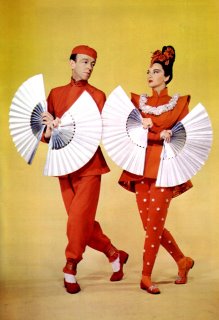
What is most regrettable when viewing Ziegfeld Follies today however is not how much talent appears to such ill effect in the finished film, but how much footage shot never made it into the final cut. Fred Astaire’s performance of a stunning tap routine to a song he wrote ‘If Swing Goes I go Too’, Avon Long’s swaying rendition of ‘Liza’ sung to a mute Lena Horne perched atop a lavish showboat, Jimmie Durante’s ‘Start Off Each Day With A Song’ and ‘The Pied Piper’, ‘A Cowboy’s Life’ featuring operatic James Melton, a comedy skit with Fanny Brice’s Baby Snooks, the song portion of Esther Williams ‘Will We Meet Again in Honolulu’ and much of the ‘bubble’ finale staged by Vincente Minnelli were all discarded after a disastrous preview.
Meanwhile, Freed was encountering problems on the set of the The Clock (1945); Judy Garland’s first non-singing film. Though the chemistry between Garland and costar Robert Walker was genuine and palpable, her lack of chemistry with director Fred Zinnemann was proving fatal to the project. After much consternation it was mutually decided to replace Zinnemann with Vincente Minnelli – a move that bode well with Garland’s temperament and helped get the shoot back on track.
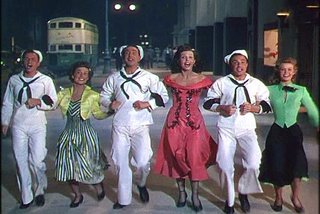
Yet, with one crisis resolved came another on another project. Garland had wanted to star in Yolanda and the Thief (1945) – Ludwig Bemelmans’ effervescent fairytale about a naïve grown woman who believes that a con artist is her guardian angel. After considerable cajoling, Freed convinced Garland to accept the lead in The Harvey Girls (1946) instead – a project originally begun as a straight western drama starring Lana Turner.
In re-conceiving the project as a musical, Freed managed a minor coup – to generate the same level of excitement Broadway audiences were currently experiencing with Rodgers and Hammerstein’s Oklahoma! while at the same time creating an original – if like-minded themed project for the big screen. Freed had intended to court Rodgers and Hammerstein for the project – a prospect that eventually fell through, with song writing duties reuniting veteran composers Harry Warren and Johnny Mercer. On the whole, The Harvey Girls proved the singular high point during this period in Freed’s tenure, earning in excess of $5,175,000 against its $2,524,315 production cost.

As for Yolanda and The Thief, Freed had hoped to use the film to officially launch dancer Lucille Bremer (who had previously appeared in a minor part in Meet Me in St. Louis – and more recently, dancing opposite Fred Astaire in Ziegfeld Follies) as an actress. Bremer, however, was much more palpable when relegated as a bit player. As the child-like Yolanda she seemed stilted awkward and unsympathetic. Worse, for the first time in his career, Vincente Minnelli’s overemphasis on visual effects and props had transformed a feather-light tale into a weighty bit of stagy kitsch, with garish sets and radically shifting moods that betrayed the fairytale quality of the original work.
In the end, Yolanda was a complete and painful failure – perhaps because Freed had moved too quickly too fast in his attempt to realign the rudiments of the Hollywood musical. He regressed somewhat with his next venture, a fictionalized biography of composer, Jerome Kern: Till The Clouds Roll By (1946) that nevertheless proved highly successful on its initial release. It grossed $6,724,000.
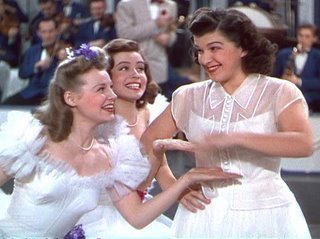
In essence, the plot of ‘Clouds’ is a straight forward melodrama periodically interrupted by staged sequences showcasing highlights from every Kern Broadway show. To consolidate the rights for all of this music proved a minor nightmare, made more palpable by Kern’s interest in the project and his acceptance of the fact that what would be seen on the screen was far removed from the specifics of his own life.
At around this same time Freed endeavored to bring Eugene O’Neill’s Ah Wilderness! to the screen – rechristened Summer Holiday (1948). Initially, director Rouben Mamoulian had his own misgivings: “The only valid reason for transforming Ah, Wilderness into a musical would be to tell that story in richer, more colorful and more imaginative terms, without sacrificing any of its true values, but on the contrary, bringing to it more beauty and excitement than was there before.” At his best, however, Arthur Freed could be a very persuasive man – enough to make Mamoulian forget that his first hunch had been the correct one all along. The final film – an abysmal affront to O’Neill’s tenderly poignant tale lost $1,460,000.

Meanwhile, Gene Kelly’s discharge from the navy warranted a comeback project in the Freed pipeline. Ultimately, it was Kelly and director Vincente Minnelli who conceived of The Pirate (1948) – a spoof on swashbuckling, with Kelly cast as a clown, Serafin mistakenly identified as the dashing rogue pirate, Macoco by his infatuated lover, Manuella (Judy Garland). Artistically sound, the project was once again marred by Minnelli’s over exploration of props and settings at the expense of developing character and mood. The result was another gargantuan flop.
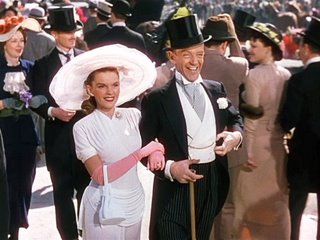
But a reprieve was on the horizon for the Freed Unit. By the end of the 40s Arthur Freed could be proud of the fact that he had produced the quintessential college musical Good News (1947), Irving Berlin’s Easter Parade (1948); another charming if fictionalized biography (this time on the lives of Rodgers and Hart) Words and Music (1948); the baseball musical, Take Me Out To The Ball Game (1949), On The Town (1949) and Fred Astaire’s reunion with Ginger Rogers; The Barkleys of Broadway (1949) without much consternation or conflict. Only the latter film is perhaps disappointing, featuring a decided lack of memorable tunes or for that matter any
 considerable dancing worthy of the Astaire/Rogers legacy pre-dated at RKO. Nevertheless, even Barkleys managed to reign in a profitable $5,421,000.
considerable dancing worthy of the Astaire/Rogers legacy pre-dated at RKO. Nevertheless, even Barkleys managed to reign in a profitable $5,421,000. By the end of the decade Arthur Freed also secured the rights to Irving Berlin’s Annie Get Your Gun (1950); a project marred by costly delays that marked the end of Freed’s association with his greatest star, Judy Garland. Busby Berkeley had been assigned the task of directing Garland – a move that should have sent up early warning flags, considering Berkeley and Garland’s mutual disdain for one another. Garland, who was at this point in her career chronically addicted to prescription sedatives, was also ill at ease about a part that had not been exclusively written with her in mind.
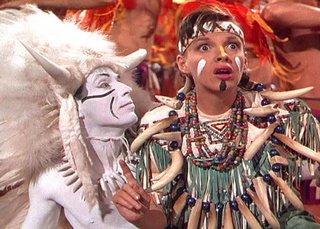
Eventually, Berkeley was replaced with director, Charles Walters who on the whole was far more sympathetic and compassionate. But for Garland, the move proved too little too late. After a series of absences she was removed from the project and replaced by Betty Hutton. Inexplicably, Walters was also replaced by George Sidney. One final bit of recasting proved a necessity; Louis Calhern as Buffalo Bill after Frank Morgan died of a heart attack. At a total cost of $3,768,785 tensions ran high on the precarious success or failure of the film – a nervous hiccup cured when Annie brought in a record $8,010,000.
@Nick Zegarac 2006 (all rights reserved).
No comments:
Post a Comment